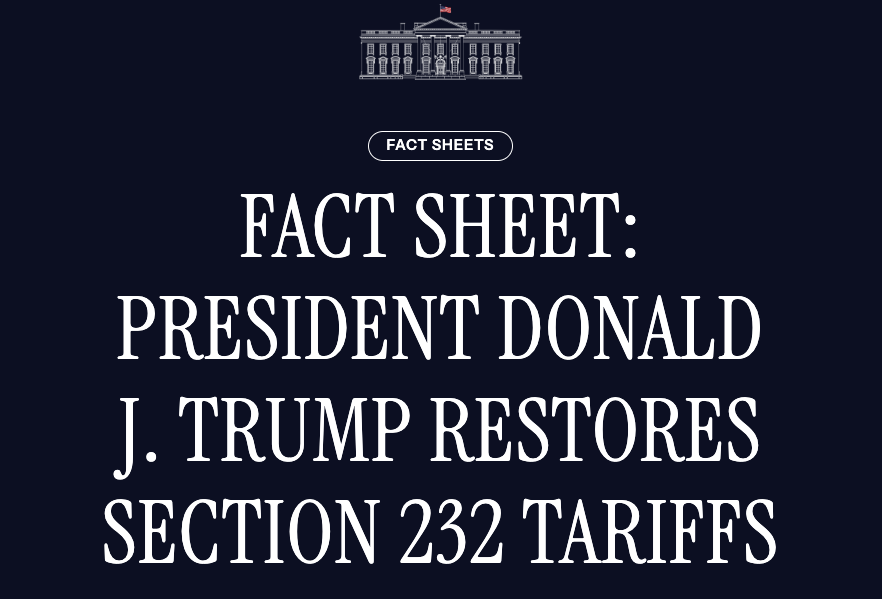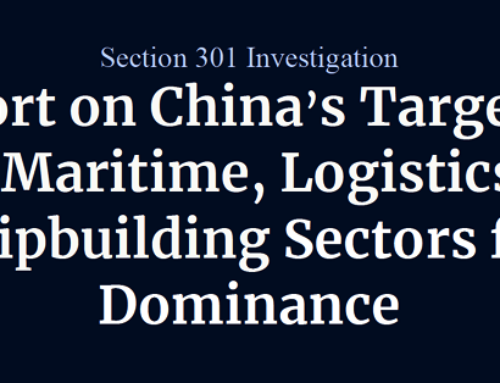On February 10, 2025, President Donald J. Trump signed two proclamations—Adjusting Imports of Steel Into the United States and Adjusting Imports of Aluminum Into the United States—reinstating 25% tariffs on all steel and aluminum imports. The move eliminates prior exemptions and alternative agreements, significantly impacting global trade.
WHY THE U.S. IS REIMPOSING STEEL AND ALUMINUM TARIFFS
The White House asserts that rising imports and global overcapacity threaten U.S. national security, citing several key factors behind the decision to reinstate tariffs. Steel imports accounted for 30% of U.S. consumption in 2024, the highest level since before the 2018 tariffs. The global steel surplus is projected to reach 630 million metric tons by 2026. Meanwhile, domestic steel and aluminum capacity utilization has fallen below 80%, a level deemed necessary to sustain national security. Additionally, tariff evasion through trade loopholes, particularly transshipment through Mexico and Canada, has further impacted U.S. industry, prompting stricter trade measures.
“American steel producers know well the negative impact of foreign unfair trade practices, including subsidies, currency manipulation and other unfair and discriminatory policies and practices, on domestic industries and their workers. Steel is a widely traded good and our industry has been repeatedly harmed by unfair trade practices around the world. Due to foreign government subsidies and other trade-distorting government policies, global overcapacity in the steel industry reached 573 million metric tons in 2024. This overcapacity, if unaddressed, can fuel surges in injurious imports into our market, and the problem of steel overcapacity is not limited to any one country or region of the world.”
Kevin Dempsey, President and CEO | American Iron and Steel Institute
KEY CHANGES UNDER THE 2025 TARIFFS
The new proclamations reset U.S. trade policy on steel and aluminum imports by enforcing uniform tariffs and tightening regulations.
A Flat 25% Tariff on All Imports
-
- Steel tariffs remain at 25% but now apply universally with no exemptions.
- Aluminum tariffs increase from 10% to 25%, affecting all imports.
- Prior country-specific exemptions—including those for Canada, Mexico, Brazil, South Korea, and the EU—are eliminated.
Elimination of Product-Specific Exclusions
-
- All previously approved exemptions for specific steel and aluminum products are revoked.
- The administration has also shut down the product exclusion process, meaning no future waivers will be granted.
Stricter U.S. Origin Requirements
-
- Only steel “melted and poured” in the U.S. and aluminum “smelted and cast” domestically qualify for tariff-free entry.
- This aims to close loopholes where minimally processed metals are shipped to third countries before being imported into the U.S. duty-free.
HOW THESE TARIFFS STACK WITH OTHER TRADE MEASURES
The new 25% tariffs add another layer of trade costs for importers, on top of existing restrictions. Steel and aluminum imports from China are already subject to Section 301 tariffs, meaning total duties on some products could exceed 60%. Additionally, many steel and aluminum products face separate antidumping and countervailing duties. Under USMCA rules, routing products through Canada or Mexico will not exempt them from tariffs. To qualify for tariff-free treatment, imports must now meet the new origin requirements.
Retaliatory tariffs on U.S. exports remain a strong possibility, with impacted countries potentially targeting American goods in response. Australia has signaled its intent to negotiate an alternative arrangement, but trade analysts suggest that securing new exemptions will be much harder this time, as the administration is focused on strengthening domestic steel and aluminum production.
HOW WILL THE NEW TARIFFS IMPACT IMPORTERS?
For manufacturers and suppliers, the elimination of alternative quota agreements means imports from Canada, Mexico, Brazil, South Korea, and the EU will now be fully subject to the 25% tariff. Many businesses will need to adjust sourcing strategies and explore cost-saving measures to remain competitive.
With no exemptions or exclusions, companies should carefully review their sourcing and production networks to determine how these tariffs will affect operations. This includes assessing supplier networks to identify alternative sources that meet U.S. origin requirements, evaluating domestic production options to mitigate tariff exposure, and analyzing cost structures to understand the long-term financial impact of the new trade restrictions. For businesses that heavily rely on imported steel and aluminum, securing new supply agreements and renegotiating contract terms will be beneficial.
Each business will need to develop a strategy to offset cost increases and maintain a competitive edge in an evolving global market. Partnering with a trusted customs expert or freight forwarder can help companies maintain compliance, navigate regulatory complexities, and explore alternative sourcing and transportation options to optimize costs and minimize disruptions.
Stay up-to-date on freight news with Green’s Weekly Freight Market Update by following us on LinkedIn. For continuous updates, make sure to check out our website at greenworldwide.com.




